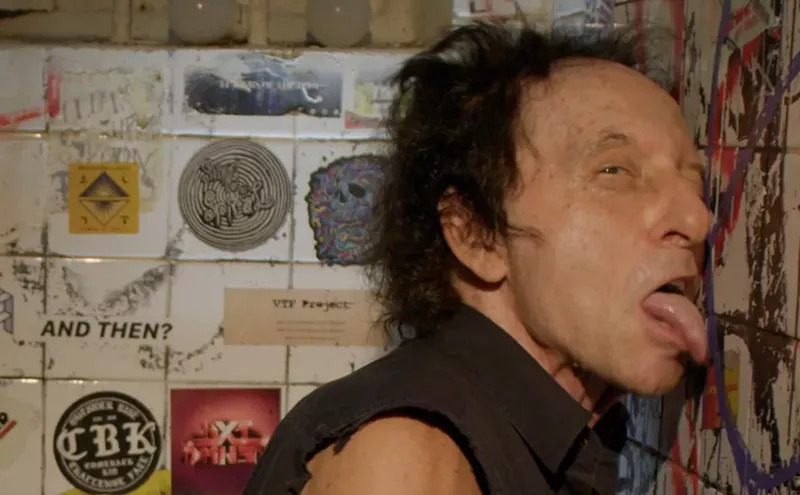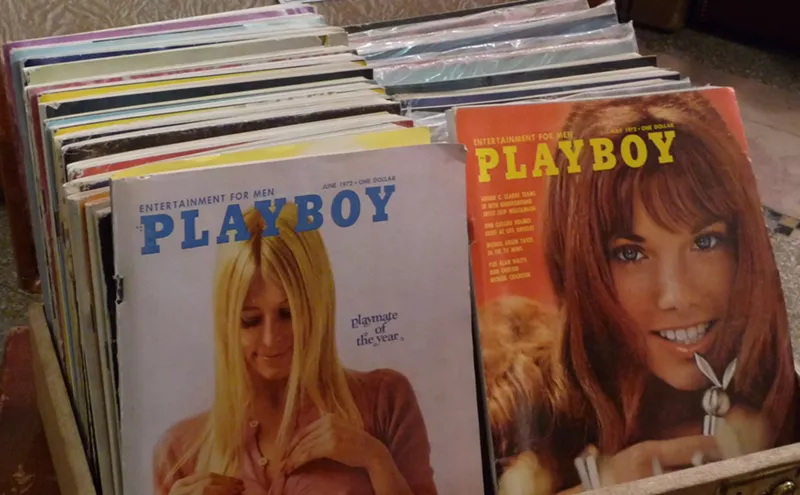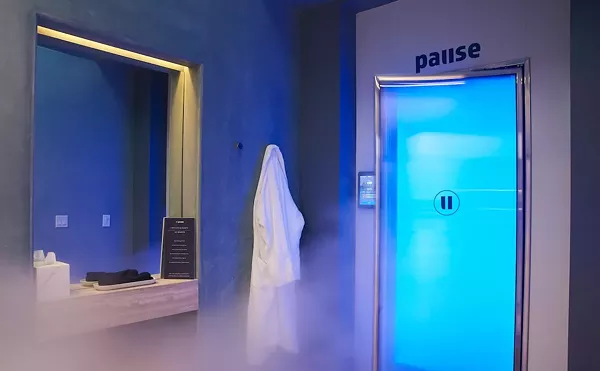Like most men, not all summer group shows are equally endowed. Or so aims to prove Frederic Snitzer with his new exhibit, "Boy, Oh Boy!" an exploration of diverse facets of masculinity filtered through a multifaceted lens.
The show is on view as part of this Saturday's Wynwood openings beginning at 7 p.m. and is among the few fresh offerings in a hood where dealers often rescue their stock from mothballs, take a feather duster to their works, and rearrange them in the gallery, hoping to attract a wayward checkbook and pay some bills.
Snitzer has been toying with the concept of the show for some time and is featuring a group of 20 artists whose works include paintings, drawings, photos, video installations, and mixed-media pieces.
"I've wanted to track back over the last year the recurring idea of the experience of masculinity and its impact on the mainstream," Snitzer says, adding he also wants to explore "the topic in representational works."
The provocative show ploughs the fertile furrows of macho/male positioning in contemporary culture from sweeping perspectives, shifting seamlessly from macho-man swagger to female and childhood notions of manliness and the complex relationships between young boys and girls.
The exhibit, Snitzer says, investigates the "concepts of maleness and how masculinity can be represented from its feminine side" in works by artists such as Hernan Bas, while also exploring the theme from a "strictly macho street side" in works by the likes of Michael Vasquez.
Snitzer says he wanted to pair Miami artists with those from as far away as Germany and South Africa and include takes on the subject by women artists who typically don't mine the framework of masculinity in their oeuvre.
Francie Bishop Good's poignant photograph The Man, for example, captures a black toddler clutching a plush toy animal as his mother sits on a couch in the background, appearing to study for an exam. The almond-eyed child seems transfixed by the musclebound figures of testosterone-bloated wrestlers gaudily emblazoned across his baby-blue T-shirt. The work suggests that masculine conditioning begins early with brutish examples of archetypical male strength readily available for consumption at the local Wal-Mart or other big-box family outlets trafficking in the culturally mundane.
The show also includes an unusual oil-on-canvas by Jonathan Meese. Oddly titled Don Gilbi, the painting, presumably the portrait of a friend — rendered in radioactive saffron yellows, carnation pinks, and lurid, mango-orange tones — depicts a B-movie creature with bulging blue eyes and insect-like pincers for a mouth. It is more reminiscent of the aftermath of an atomic blast transforming bugs into mutants than a picture of a man. The paint pools on the canvas in toxic swirls, almost as if Meese ingested a rainbow-hued bromide to purge himself of a haunting vision and vomited what was cramping his guts across the garish surface of his sensational piece.
Don't miss Paul P.'s untitled book-sized watercolor that brings to mind Matt Damon's character in The Talented Mr. Ripley. The vaguely sinister piece, executed in dull, monochromatic washes of yellow and gray, depicts a youthful, seemingly carefree chap overlooking a bay that might be in San Remo, Italy. As the clouds gather on the horizon, he appears to be entertaining homoerotic hopes while soaking up luxury or, just as easily, perhaps planning to murder a friend.
Around the corner at Gallery Diet, the space's director, Nina Johnson, has eschewed the ubiquitous summer group show and is inaugurating the first Miami solo exhibit by New York-based artist Fabienne Lasserre.
"What Is Found There" is inspired by a collection of essays by poet Adrienne Rich and her writings about the intersection of poetry and politics.
Consisting mostly of sculpture, the works on exhibit were created in the artist's New York studio and in Oaxaca, Mexico, where Lasserre worked with a local weaver to produce felt she later assembled into her sculptural pieces.
Some of her works resemble shaggy, bone-white biomorphic spheres that float overhead while fettered by shackles. Others undulate in the space, conveying the notion of chain-like enclosures suspended from the ceiling, while yet others snake up walls like a spreading fungus or give the impression of an animal hide strung up from a cat's cradle.
The artist explains she was forced to "adapt different rhythms, materials, and contexts" while executing her recent body of work, and the results are both tactile and fluid.
Upwind, on 29th Street, the Calix Gustav Gallery opts for a modest group show featuring a trio of artists tackling the inexorable tides of time and the catastrophic effects of man on nature and personal tragedy.
"The Passing" features work by Jovan Karlo Villalba, Catalina Jaramillo, and Richard Herzog.
The Ecuadorian-born Villalba is represented by sprawling, cinematic paintings that engulf the viewer and depict threats of biological and nuclear warfare, environmental catastrophe, or economic ruin.
In Lost City, a sprawling, nightmarish vision of an apocalyptic future, colors slash across the canvas in wildly aggressive flannel gray, flesh pink, and African violet to conjure a devastated metropolis looming from beyond a gnarled copse of trees heralding man's emergence from a dystopian oblivion of his own creation.
Likewise in his Death of an Artist's Studio, Villalba slings paint with the reckless abandon of someone petrified by fear of impending doom. The painting conveys the aftereffects of a mortar assault on the building materials aisle of your corner Home Depot.
By contrast, Herzog's sculptures of botanical experiments gone awry exude a much less violent sensibility. His Flowering Ivy Shoots climbs against a wall much like a tangle of kudzu and is crafted from a blister of snaking wood and metal triangles melding into abstract tetrahedrons telegraphing a math nut's cranial gear box.
Check out Herzog's Rube Goldberg-esque Lost Flower in Emerald City, in which he peels back the layers on a mystical Oz and creates a schizzy rendition of a science lab rat with a Miracle-Gro fixation. In the piece, test tubes and erupting fiery-gold and crimson petals blaze in a conflagration auguring that nature eternally remains in control over our cravenly, caustic impact on the planet.
For her part, Jaramillo will weigh in this Saturday night with an installation and video referencing her separation from her partner and her mother's recent passing. The work will deal with the sense of loss and grief that brings upheaval to people's lives and can anchor them to an inescapable reality.












